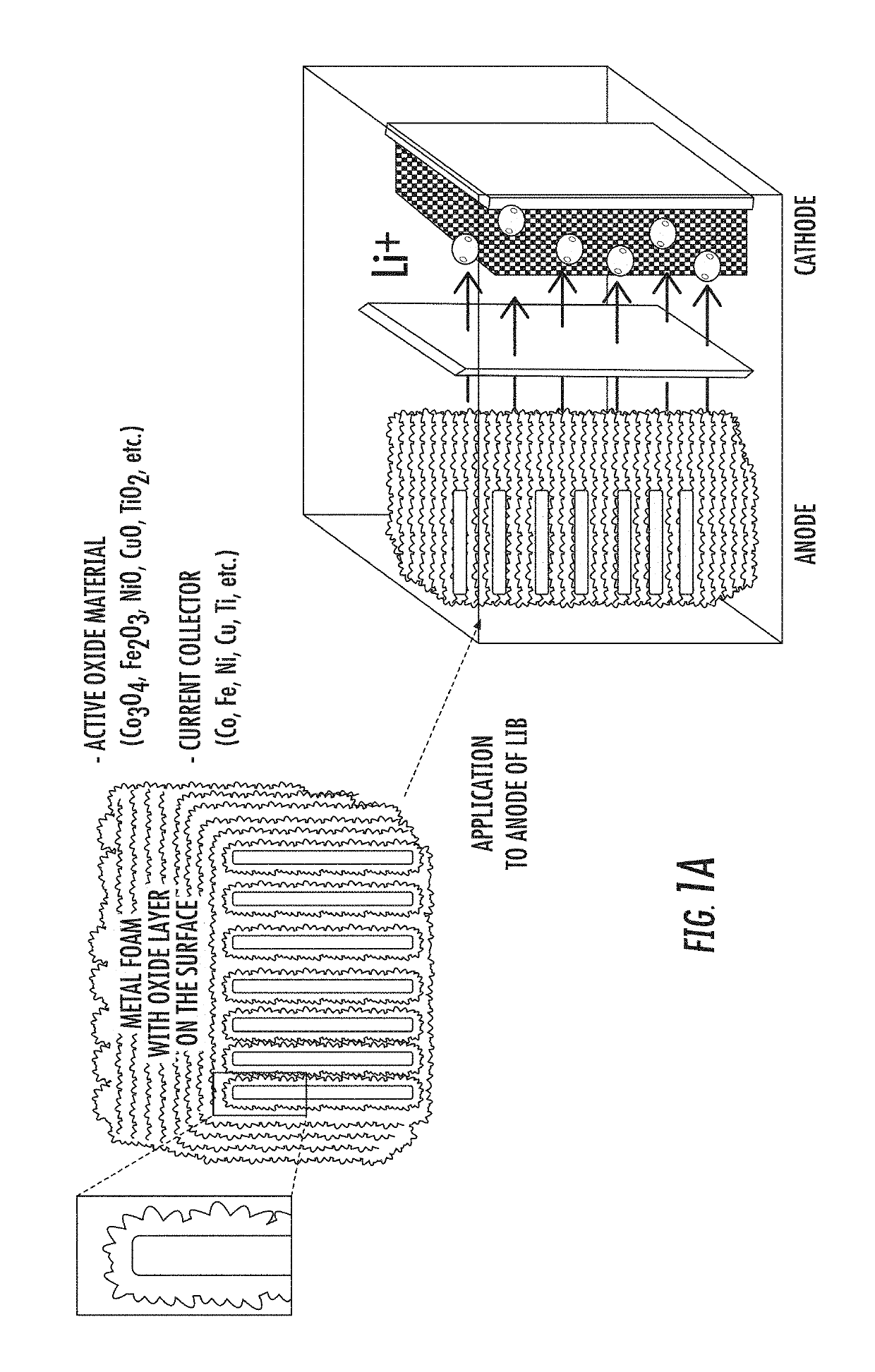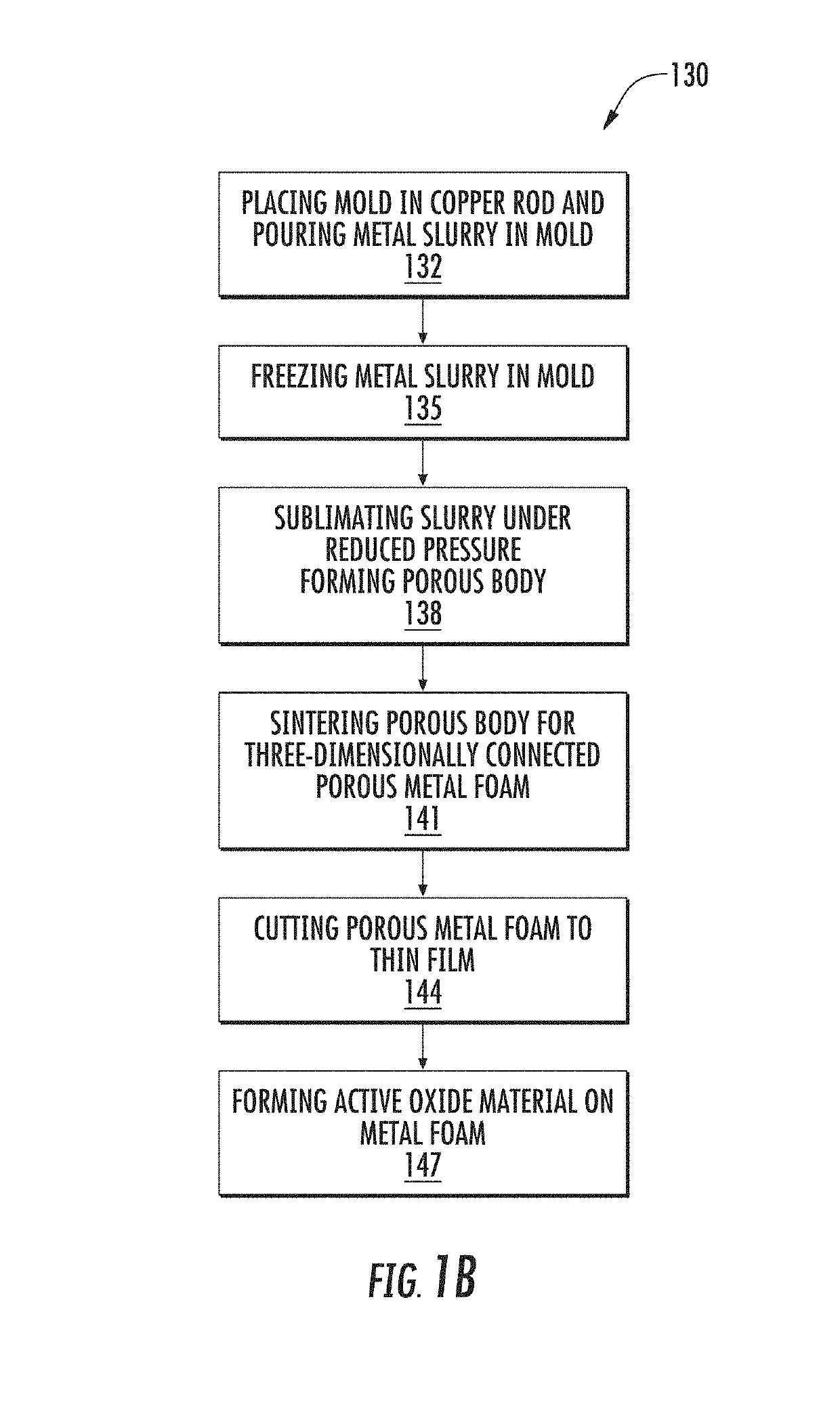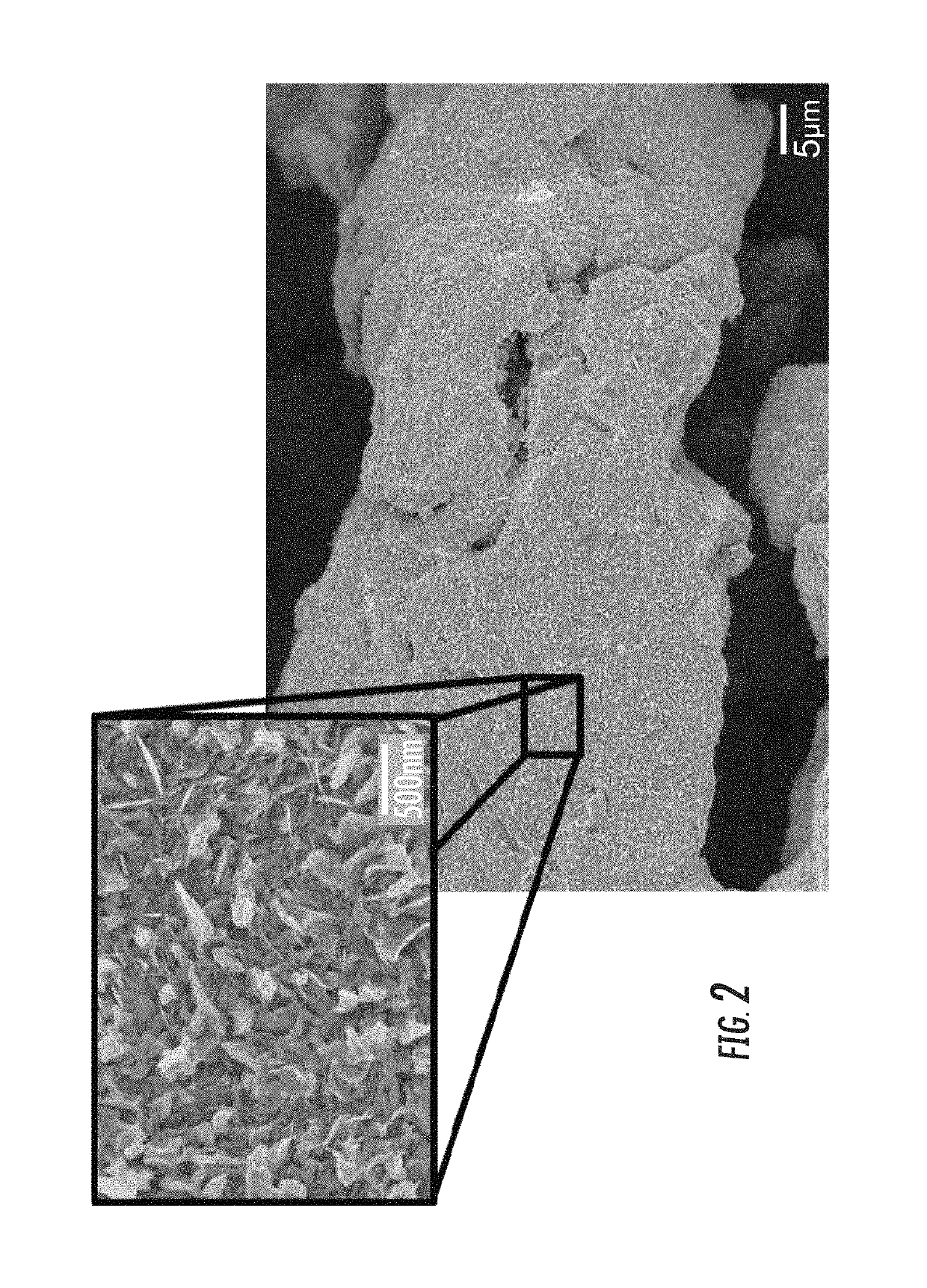Metallic foam anode coated with active oxide material
a technology of active oxide and metal foam, which is applied in the manufacture process of electrodes, cell components, electrochemical generators, etc., can solve the problems of graphite's low specific capacity, low power density, and inability to meet the needs of next-generation battery applications, and achieves low cost, low cost, and low cost. , the effect of reducing the volume expansion of the active material
- Summary
- Abstract
- Description
- Claims
- Application Information
AI Technical Summary
Benefits of technology
Problems solved by technology
Method used
Image
Examples
exemplary embodiment 1 (
[0054Three-Dimensional Porous Iron Oxide or Iron Anode)
[0055]Iron foam is selected as a model material for the confirmation of this implementation and is fabricated by a freeze-casting process. A metal slurry is prepared by mixing iron oxide powder with deionized water and binder. The iron oxide powder is well dispersed in the slurry by a combination of stirring and sonication processes. The slurry is then poured into a fluoropolymer resin or Teflon mold onto the copper rod, which is cooled using liquid nitrogen (N2). The temperature of the top of the copper rod is controlled by a heater and is fixed at −15 degrees Celsius.
[0056]After freezing, the frozen slurry is freeze-dried at −90 degrees Celsius for about two days (e.g., about 48 hours), forming a porous green-body. The green-body is reduced and sintered in a tube furnace in hydrogen (H2)—95 percent argon gas mixture. The reduction is performed step-by-step both at 300 degrees Celsius for 2 hours and at 500 degrees Celsius for ...
exemplary embodiment 2 (
[0058Three-Dimensional Porous Titanium Oxide or Titanium Anode)
[0059]Titanium foam is selected as a model material and is fabricated by a freeze-casting process. Prior to freeze-casting, polyvinyl alcohol (PVA) is dissolved in distilled water, and titanium powder is added to the prepared solution to complete the slurry. The slurry is then poured directly onto the top of a copper chiller rod standing in a stainless steel vessel under liquid nitrogen (N2).
[0060]A frozen green-body is lyophilized to remove ice through sublimation at a subzero temperature (e.g., less than 0 degrees Celsius) for about a day (e.g., about 24 hours). The lyophilized green-body is then sintered in a vacuum furnace via a two-step heat-treatment process: at 300 degrees Celsius for 3 hours and then at 1100 degrees Celsius for 7 hours.
[0061]Finally, for the formation of anatase oxidation layer, titanium foam is presoaked in hydrogen peroxide (H2O2) at 100 degrees Celsius for 3 hours. Titanium foam is then oxidiz...
exemplary embodiment 3 (
[0063Three-Dimensional Porous Cobalt Oxide or Cobalt Anode)
[0064]Cobalt powder slurry based on 30 milliliters of deionized water consists of 7 volume percent cobalt oxide powder and 8 weight percent PVA binder. The slurry is dissolved by using a combination of stirring and sonication to improve the degree of dispersion. The slurry is then poured into a fluoropolymer resin or Teflon mold onto a copper rod. The temperature of the top of the copper rod is fixed at −10 degrees Celsius by liquid nitrogen and a heater.
[0065]After the slurry is completely frozen, the frozen sample is sublimated at −88 degrees Celsius for 24 hours in a freeze dryer in vacuum, resulting in the removal of ice crystals, forming a green-body with directional pores. The green body is then reduced from cobalt oxide to cobalt in hydrogen atmosphere and then sintered. The reduction and sintering processes consist of pre-sintering at 550 degrees Celsius for 4 hours and actual sintering at 1000 degrees Celsius for 9 ...
PUM
| Property | Measurement | Unit |
|---|---|---|
| pore size | aaaaa | aaaaa |
| temperature | aaaaa | aaaaa |
| temperature | aaaaa | aaaaa |
Abstract
Description
Claims
Application Information
 Login to View More
Login to View More - R&D
- Intellectual Property
- Life Sciences
- Materials
- Tech Scout
- Unparalleled Data Quality
- Higher Quality Content
- 60% Fewer Hallucinations
Browse by: Latest US Patents, China's latest patents, Technical Efficacy Thesaurus, Application Domain, Technology Topic, Popular Technical Reports.
© 2025 PatSnap. All rights reserved.Legal|Privacy policy|Modern Slavery Act Transparency Statement|Sitemap|About US| Contact US: help@patsnap.com



